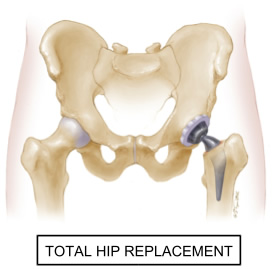|
Full-scale Multiphysics Tribological Modeling of Artificial Hip Joints
| Adverse tribological conditions in the hip joint interface, such as low speeds and fluid viscosities, in addition to high impact loads, cause the lubrication mode to exist in the boundary and mixed lubrication regimes. These regimes lead to increased wear debris generation and the onset of osteolysis, thus reducing joint lifetime. Failure of hip joints via the generation of wear debris has taken the form of a serious bio-tribological challenge. Particle augmented mixed lubrication framework is used to model the transient operation of the hip joint under normal walking conditions. Effect of surface texturing on lubrication enhancement and debris trapping has also been studied. |

Photo: medicine.missouri.edu |
| PFTL Research Assistant(s): |
|
Gagan Srivastava |
| Method(s) Employed: |
|
Mixed Lubrication Modeling, Surface texture |
| Rig(s) and/or Software(s) Employed: |
|
MATLAB, Mathematica, Paraview, QtiPlot |
| Sponsor(s): |
|
Philip and Marsha Dowd Seed Fund |
Sample Results:

Select PFTL References:
|



